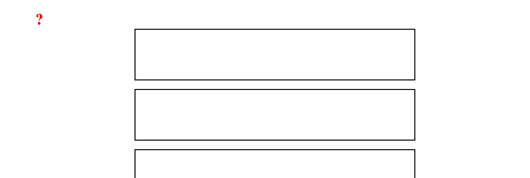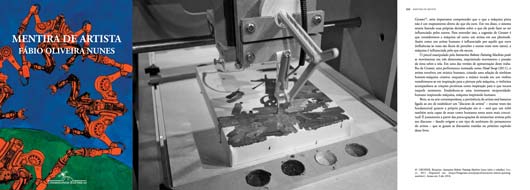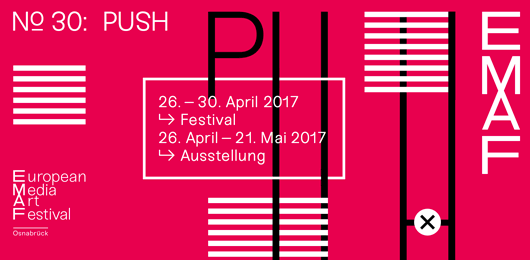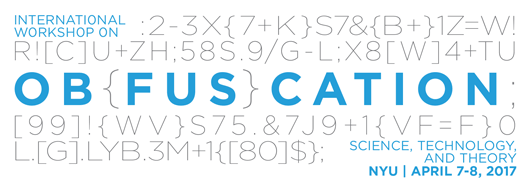My work You like my like of your like of my status is part of a new exhibition at Peripheral Forms in Portland. The exhibition, titled #homophily and curated by Jah Justice, draws connections between the 1950s sociology term—coined “to describe the tendency of people to form connections with others that are similar to themselves”—and the current state of social media echo chambers driven by advertising, data, likes, and clicks. You can see the exhibition online, running through the 31st of August.
Blog
Works and Interview Lead Off New Chinese/English Book on E-Performance
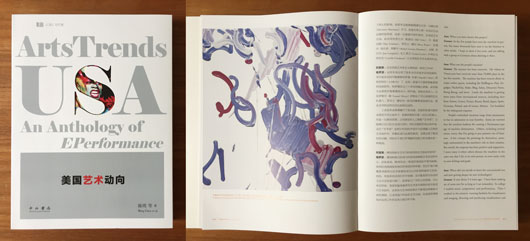
Arts Trends USA: An Anthology of EPerformance
A discussion of my works and an interview with me leads off a new Chinese/English book on US arts trends. The volume, by professor and designer Ming Chen, is titled “Arts Trends USA: An Anthology of EPerformance.” My work is in a chapter called “Applications of New Technology in the Arts,” and consists of an introduction by Chen, photos of many works (Interactive Robotic Painting Machine, Head Swap, Computers Watching Movies, and Flexible Pixels inside and on the back cover), and a Chinese translation of an interview I did with Fer Ares of Roboteknia magazine in Mexico. The book is available from Amazon.cn.
Demetricator Discussed in Irresistible: The Rise of Addictive Technology and the Business of Keeping us Hooked
Continuing with some catch-up, I’ve been meaning to mention that Facebook Demetricator gets a prominent mention along with quotes of mine and screenshots of the work in Adam Alter’s recent book Irresistible: The Rise of Addictive Technology and the Business of Keeping Us Hooked. In this New York Times Bestseller, Alter discusses Demetricator as a subtle tool which “dulls the feedback cues that make Facebook addictive.” You can hear Alter talk about Demetricator in this podcast from the University of Pennsylvania, or read about it in reviews of the book at Psychology Today or The Globe and Mail. You can grab a copy at Amazon.
Painting Machine Discussed in New Book from Brazil
My Interactive Robotic Painting Machine is discussed in a new book by artist and professor Fabio Oliveira Nunes, titled “MENTIRA DE ARTISTA: arte (e tecnologia) que nos engana para repensarmos o mundo.” Roughly translated as “ARTISTS LIE: art (and technology) that deceives us to rethink the world,” the book “…addresses a universe of contemporary works of art that pass for what they are not. Here, artists resort to forms that attempt to mislead the real nature of their propositions by inserting them as part of a context: they can make use of personas (assuming an alternative existence), create fictitious institutions (such as companies), generate ambiguous situations, or embark on other practices that, as a rule, happen outside of the habitual environments of the arts.”
I’m very happy to be a part of this book, and also glad to share that it is available for free online (in addition to print). Fabio Oliveira Nunes is a professor at the Universidade Estadual Paulista Júlio de Mesquita Filho, UNESP, in Brazil.
Go Rando at Athens Digital Arts Festival
My work Go Rando will be part of the Athens Digital Arts Festival in Greece. Under the theme #PostFuture, “ADAF 2017 aims to explore the future of digital culture, merging the digital and physical boundaries and discovering the effects of this futuristic lifestyle in the different aspects of everyday life.” Having been in the festival twice in previous years (with ScareMail and the premiere of You like my like of your like of my status), I’m happy to once again be a part of this event. The festival runs from the 18-21 of May.
Touching Software at the European Media Art Festival
My work Touching Software will be a part of the 2017 European Media Art Festival in Onsabrück, Germany. Titled “PUSH”, the Festival’s thematic statement reads:
Push messages, status and news updates, social bots and hate comments – smartphones and screens are permanently blinking and flashing. Public spaces have always been permeated by announcements, warnings and spectacles. Today, we are experiencing an increase in input pressure – after all, every one of us is a recipient, producer and sender, all rolled into one. Public opinion is characterised by constant information and disinformation. The result: differences between public and private spaces disappear, positions that were thought to be secure vanish, and populists find their way into government.
The Festival runs from 26-30 of April.
Upcoming Talks at Theorizing the Web and the International Workshop on Obfuscation
Next week I’ll be giving a couple talks in New York. The first will be at the International Workshop on Obfuscation at New York University. Led by Finn Brunton and Helen Nissenbaum, the workshop “convenes researchers, scientists, developers, and artists to discuss a broad range of technical, theoretical, and policy approaches to obfuscation, from tools that anonymize users’ social media data to new methods for writing code itself.” The title of my talk is “Go Rando First and Ask Questions Later: Resisting Emotional Surveillance with Noisy Feelings.” I’ll be speaking about Go Rando as an example method for obfuscating personal identity, both in an outward sense (e.g. within big data) and an inward one (e.g. how the project encourages reconsideration of one’s one reactions on a case-by-case basis). I’ll also talk a bit about my works Facebook Demetricator and ScareMail within this same context, as well as the role of obfuscatory artworks in the public perception of governmental and corporate surveillance.
The second, with my co-author Nicole Brown, will be at Theorizing the Web 2017 in Queens. Here’s the abstract:
The (In)visibility of Black Death: Questioning the Image on Social Media Feeds
From its earliest days, Facebook’s News Feed has included images uploaded by users. But the site’s early status interface began with a text-based prompt: “[Username] is…”. Though Facebook still supports textual content and users still post text-based messages, the feed is now dominated by the image. One significant visual subject of this domination has been violence against black bodies. Within the contexts of the Black Lives Matter movement and the 24-hour news cycle, social media platforms—and the increasing number of images they display—make visible how national bloodlust and anti-blackness converge to create and feed a compulsive desire to consume images of black death. But what else do these displays of anti-black violence reveal? Are emotional traumas created by repeated exposure to images that reconstruct and display black experiences with violence? We argue that this exposure distorts how one’s blackness constructs perceptions of who is human and who is not human. We also consider the role of the News Feed algorithm in this context, where being seen and metrically responded to can lead to increased visibility (and thus, power), while overexposure to the same material can eventually lead to a perceptual invisibility and trauma. Critical net art practices that treat software systems as recomposable material can help us examine these issues. Specifically we consider how images make black death both visible and invisible through the use of the artwork Textbook. Textbook is a browser extension that removes images from Facebook, allowing users to test for themselves how images affect their experience and read of the site. Such a mechanism can enable resistance against the forced consumption of images of black death without erasing the subjects and actions they portray from critical inquiry. Given how the relationships between image, metrics, and algorithms have led to a torrent of dehumanizing and socially damaging visual material on the News Feed, it is time to more critically interrogate the role of the image on social media feeds.
Touching Software Reviewed in Neural
My work Touching Software was reviewed in the latest issue of Neural (#55). In a piece titled Touching Software: The Enthrallment to Touch, Aurelio Cianciotta writes:
… Grosser assembled a supercut of touch-based interactions from the popular TV series House of Cards, unsurprisingly with no voices heard and various evolving strategies to render the content. It is a difficult rendering of intimacy, as the screen is always oriented to the protagonists’ faces, but the expressions and gestures viewed become suddenly both empathic and iconic.
You can pickup a copy in print or read the full review online.
Go Rando Featured in The Atlantic, The Washington Post, CBC Radio, and More
Here’s a selection of recent press about Go Rando:
- The Washington Post: How to hide your true feelings from Facebook
- The Atlantic: The Facebook Algorithm is Watching You: Here’s One Way to Confuse It
- CBC Radio [Canada]: Haha, Wow, Grrr… Go rando with Facebook reactions
- We Make Money Not Art: Obfuscate Your Feelings on Facebook and Defeat Its Algorithms in the Process
- Creative Applications Network: Go Rando – a big FU to Facebook sentiment analysis
- Creators (VICE): Confuse Facebook’s Algorithms with the ‘Go Rando’ Web Extension
- Wired [Italy]: L’estensione per browser che nasconde le tue emozioni da Facebook
- The 21st Show [radio]: Facebook, Privacy & Big Data – Why It Matters
- The Next Web: This extension randomizes your reactions to hide your true emotions from Facebook
- Art F City: Friday Links
- Fox News: What Trump Should Say On Tuesday
- Suddeutsche Zeitung [Germany]: Bei Facebook zählen Herzen jetzt mehr als Likes
- Die Tageszeitung [Germany]: Niemand weiß, was ich mag
- Archimag [France]: Go Rando : une extension pour tromper Facebook sur vos émotions
- Graphisme & Interactivité [France]: Tromper Facebook avec des émotions aléatoires
- We Are Social Media: Go Rando and Hide Your True Emotions From Facebook
- Lenta.ru [Russia]: Найден способ скрыть свои эмоции от Facebook
- The Objective [Spain]: Cómo Facebook está construyendo un perfil sobre ti con tus reacciones
Commentary in Big Data & Society Discusses How Tracing You Reveals Desire for Visibility
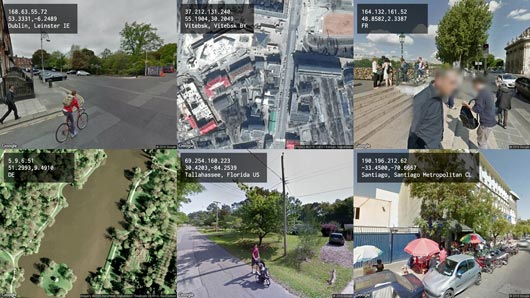
I discuss reactions to Tracing You in the latest issue of Big Data & Society
I have a commentary in the latest issue of the journal Big Data & Society. The text, titled “Tracing You: How transparent surveillance reveals a desire for visibility,” examines feedback to my computational surveillance work Tracing You. I argue that reactions to the work—in particular those who are angry Tracing You isn’t more accurate than it is—reveal how we’ve become conditioned to expect surveillance. Why?:
One answer lies in “Web 2.0’s” (O’Reilly, 2005) insistence on radical transparency. Social media in particular has conditioned many to not only accept high visibility, but to desire it (Bucher, 2012: 1175). This is because being as visible as possible on sites like Facebook and Twitter is the key that permits entry into and full participation within those site’s systems of interaction and connection. Users can lurk or hide if they choose, but doing so severely limits user experience. When this desire for visibility intersects with ubiquitous transparent veillance, it contributes not only to an acceptance of being seen, but also helps to produce the negative emotions expressed by users less visible to surveillance systems. Being less visible within social networks means having less power; one’s power (to influence opinion, to increase friend networks, etc.) is dependent on one’s visibility.
As a result, many visitors to Tracing You have already been conditioned by social networks to equate visibility with power. Thus, by mirroring the veillant structures of sites like Facebook, Tracing You also produces—at least for some of its visitors—a similar desire for visibility. This happens despite the overt potentially negative surveillance implications proposed by Tracing You’s ability to reveal one’s physical location.
You can read the full text here. The piece is part of a special issue titled “Veillance and Transparency: A Critical Examination of Mutual Watching in the Post-Snowden, Big Data Era,” edited by Vian Bakir, Martina Feilzer and Andrew McStay.
